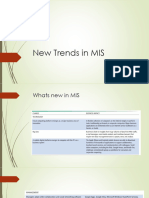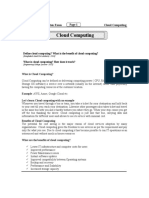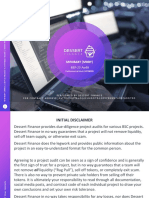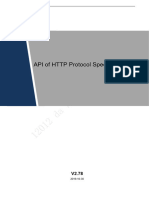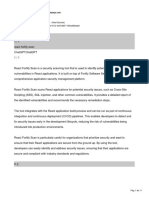0% found this document useful (0 votes)
11 views45 pagesChapter 8
Chapter 8 discusses cloud computing, defining it as the delivery of IT services over the internet and categorizing it into various service types such as IaaS, PaaS, and SaaS. It highlights the advantages and disadvantages of cloud solutions, including cost savings, flexibility, and security concerns. Additionally, it outlines different cloud deployment models and key service providers like AWS, Google Cloud, and Microsoft Azure.
Uploaded by
kirubelsintayehu96Copyright
© © All Rights Reserved
We take content rights seriously. If you suspect this is your content, claim it here.
Available Formats
Download as PDF, TXT or read online on Scribd
0% found this document useful (0 votes)
11 views45 pagesChapter 8
Chapter 8 discusses cloud computing, defining it as the delivery of IT services over the internet and categorizing it into various service types such as IaaS, PaaS, and SaaS. It highlights the advantages and disadvantages of cloud solutions, including cost savings, flexibility, and security concerns. Additionally, it outlines different cloud deployment models and key service providers like AWS, Google Cloud, and Microsoft Azure.
Uploaded by
kirubelsintayehu96Copyright
© © All Rights Reserved
We take content rights seriously. If you suspect this is your content, claim it here.
Available Formats
Download as PDF, TXT or read online on Scribd
/ 45







